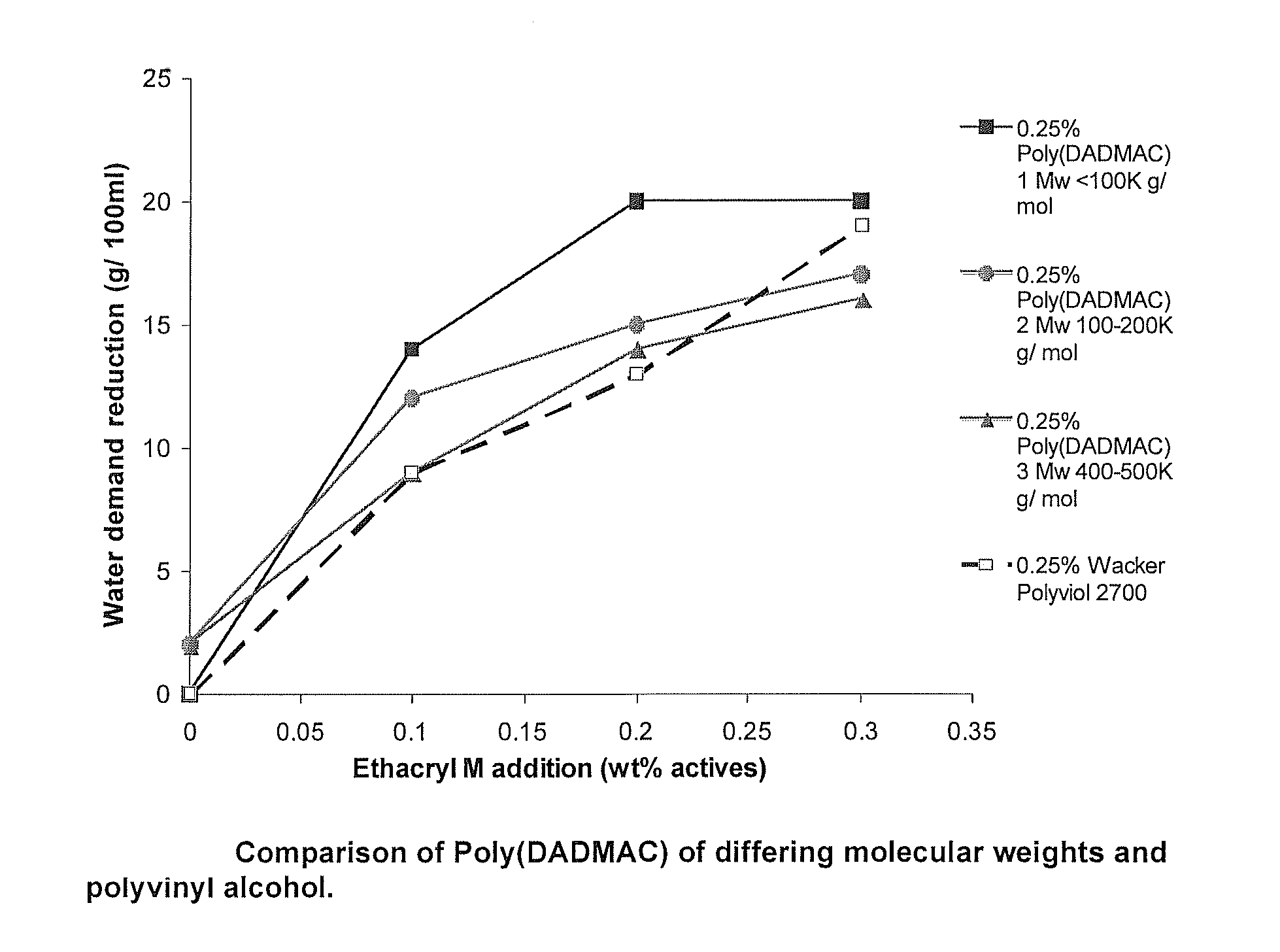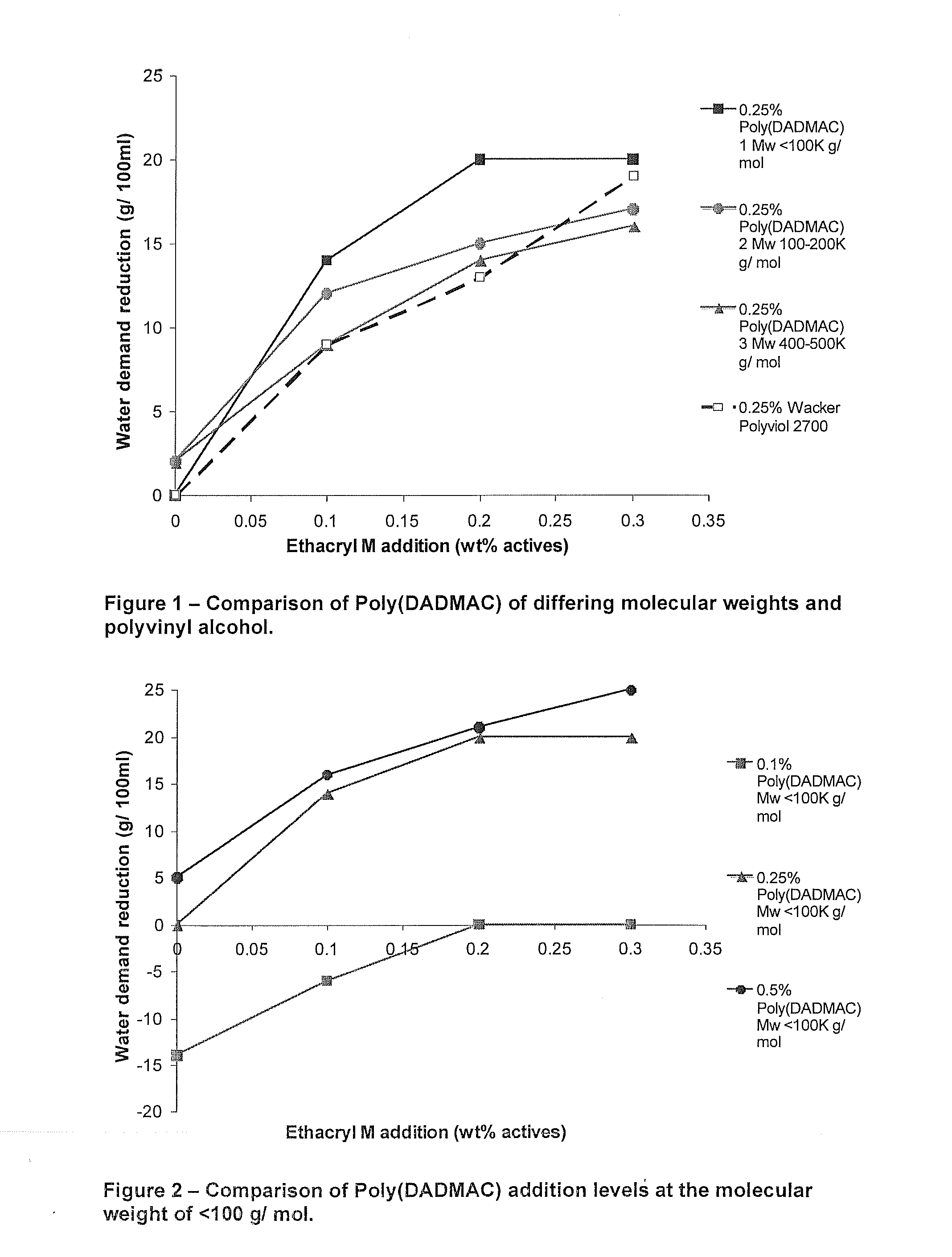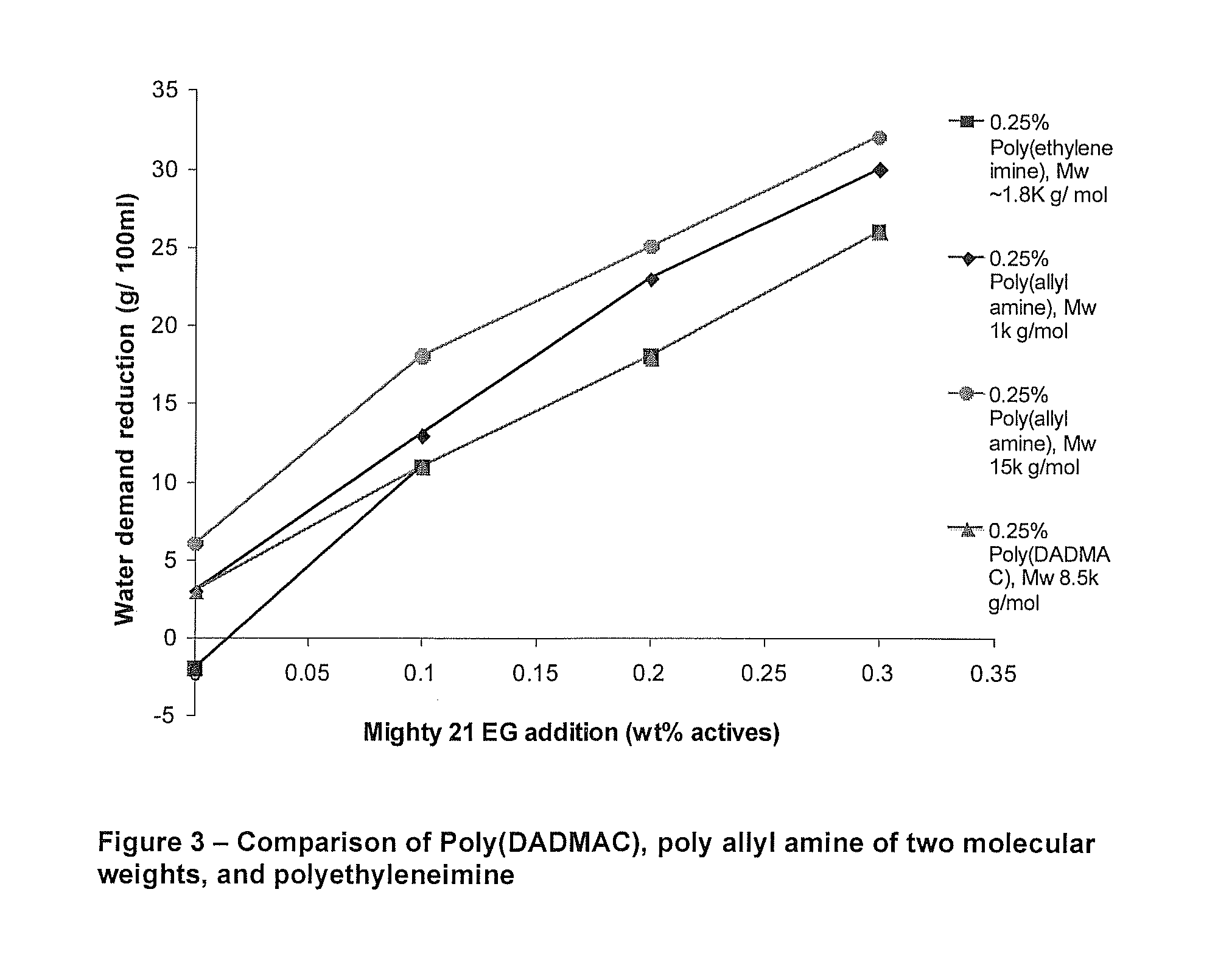Method of Producing Gypsum Building Boards
a technology of gypsum and building boards, which is applied in the direction of ceramic shaping apparatus, electric devices, domestic applications, etc., can solve the problems of further lowering of dose efficiency of fluidizers, and lowering of water gauges, so as to reduce water demand, increase the efficiency of comb-based copolymer, and reduce water demand
- Summary
- Abstract
- Description
- Claims
- Application Information
AI Technical Summary
Benefits of technology
Problems solved by technology
Method used
Image
Examples
example 1
[0046]150 g of DSG (desulphogypsum) stucco to which had been added 1.5% by weight Wyoming bentonite (a naturally swelling clay) was used in each test except the control—in the latter no clay was added.
[0047]Water at 40° C. was added in the weighed amount into a small Waring blender and 0.1% trisodium citrate (w / w stucco) as retarder was added to the blend along with solid additives, and the blender was operated for 10 seconds to dissolve the retarder.
[0048]Ethacryl M (a commercially available comb-based copolymer which is an ethoxylated acrylic acid polymer) from LyondellBasell and other liquid additives as appropriate were added at this stage. Then, the stucco was sprinkled onto the solution over 30 seconds and left to stand for 30 seconds. Mixing time was 10 seconds on low speed. The slump diameter of the slurry was measured on the falling plate consistometer as described in Section C.3.1.1 of BS 1191: Part 1: 1973.
[0049]The results summarized in the following Table 1 show the adv...
example 2
[0050]Example 1 was repeated, replacing the 150 g of DSG by 200 g of a natural gypsum known to contain clay in each test.
[0051]The mixing water level was adjusted to achieve a certain consistency given by the slump diameter. Once 2 repeats were within the range of 58-60 mm, the level of water was noted as ‘water demand’.
[0052]The clay modifiers were poly DADMAC 1 (with a molecular weight of approx 100K); poly DADMAC 2 (with a molecular weight of 100 to 200K); poly DADMAC 3 (with a molecular weight of 400 to 500K); and silanized partially hydrolyzed polyvinyl alcohol—Wacker Polyviol 2700 (Polyviol).
[0053]The results summarized in the following Table 2 show the advantageous reduced water demand achieved by adding a comb-based polymer and a cationically charged polymer to an exemplary stucco that contains clay. Water demand reduction=(Water demand from control with no comb-based polymer or clay modifier−Water demand from given formulation).
TABLE 2Addition(wt %Water demand reduction (g / ...
example 3
[0056]Example 2 was repeated using as the stucco a second natural gypsum known to contain clay, and the Ethacryl replaced by “Mighty 21 EG” which is a comb-based copolymer commercially available from Kao.
[0057]The results summarized in the following Table 3 show the advantageous reduced water demand achieved by adding a comb-based polymer and a polyethyleneimine or poly allyl amine to exemplary gypsum stucco slurry that contains clay.
TABLE 3Addition(wt %Water demand reduction (g / 100 g)actives on0 wt %0.1 wt %0.2 wt %0.3 wt %Clay modifierstucco)MightyMightyMightyMightyPoly(ethyleneimine) with a solution0.25−2111826average Mw of approx 1800Poly allyl amine Mw 1,0000.253132330Poly allyl amine Mw 15,0000.256182532Poly(DADMAC) Mw 8,5000.253111826
[0058]The above results details are summarized in FIG. 3 of the accompanying drawings. FIG. 3 shows that water demand values were substantially reduced for a clay-containing gypsum containing the specified polymers in the amounts indicated.
PUM
| Property | Measurement | Unit |
|---|---|---|
| temperature | aaaaa | aaaaa |
| temperature | aaaaa | aaaaa |
| water-soluble | aaaaa | aaaaa |
Abstract
Description
Claims
Application Information
 Login to View More
Login to View More - R&D
- Intellectual Property
- Life Sciences
- Materials
- Tech Scout
- Unparalleled Data Quality
- Higher Quality Content
- 60% Fewer Hallucinations
Browse by: Latest US Patents, China's latest patents, Technical Efficacy Thesaurus, Application Domain, Technology Topic, Popular Technical Reports.
© 2025 PatSnap. All rights reserved.Legal|Privacy policy|Modern Slavery Act Transparency Statement|Sitemap|About US| Contact US: help@patsnap.com



